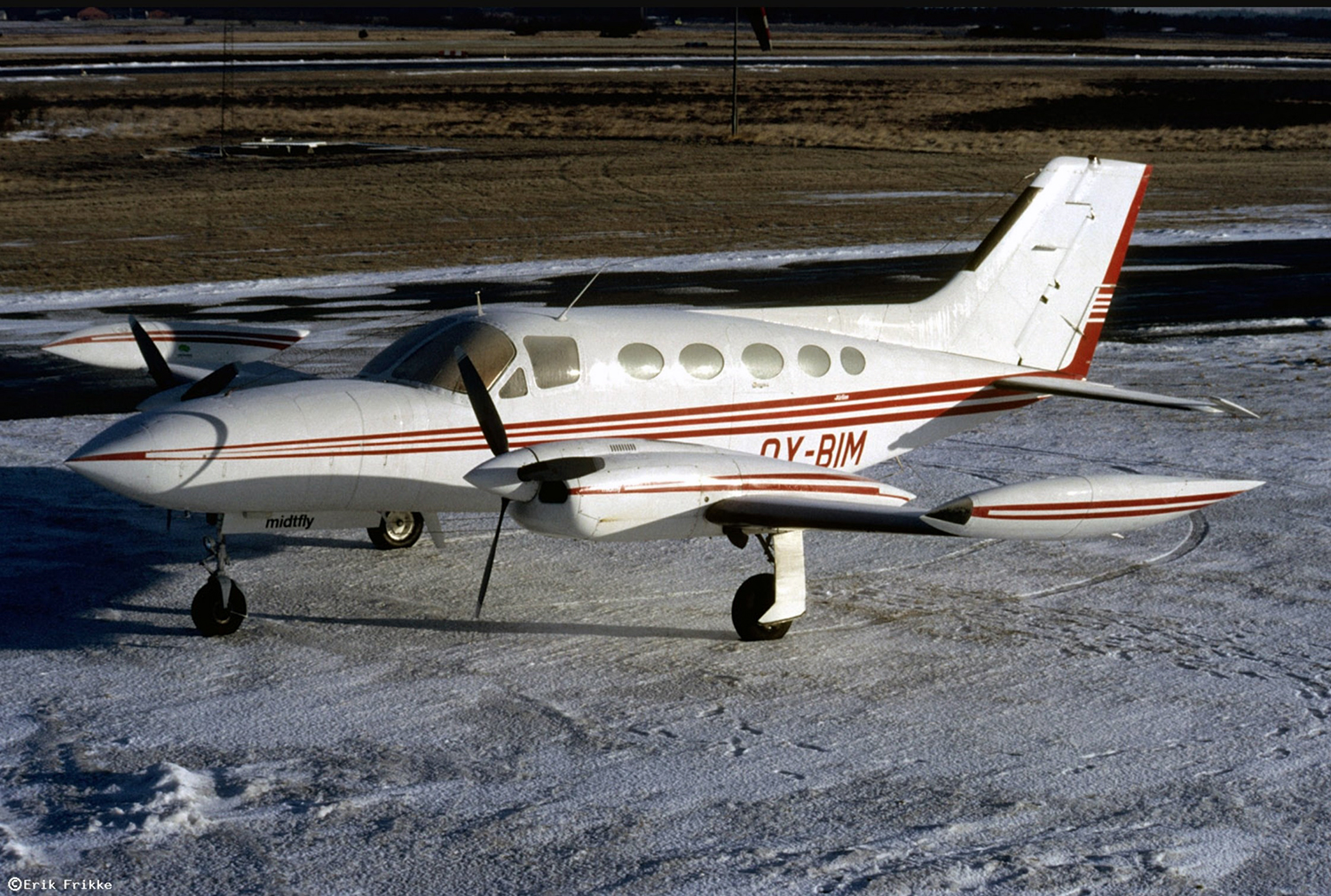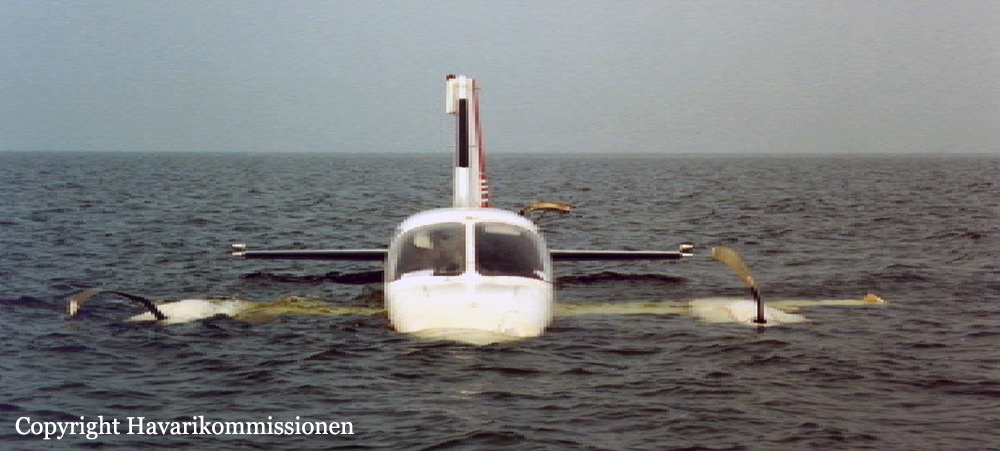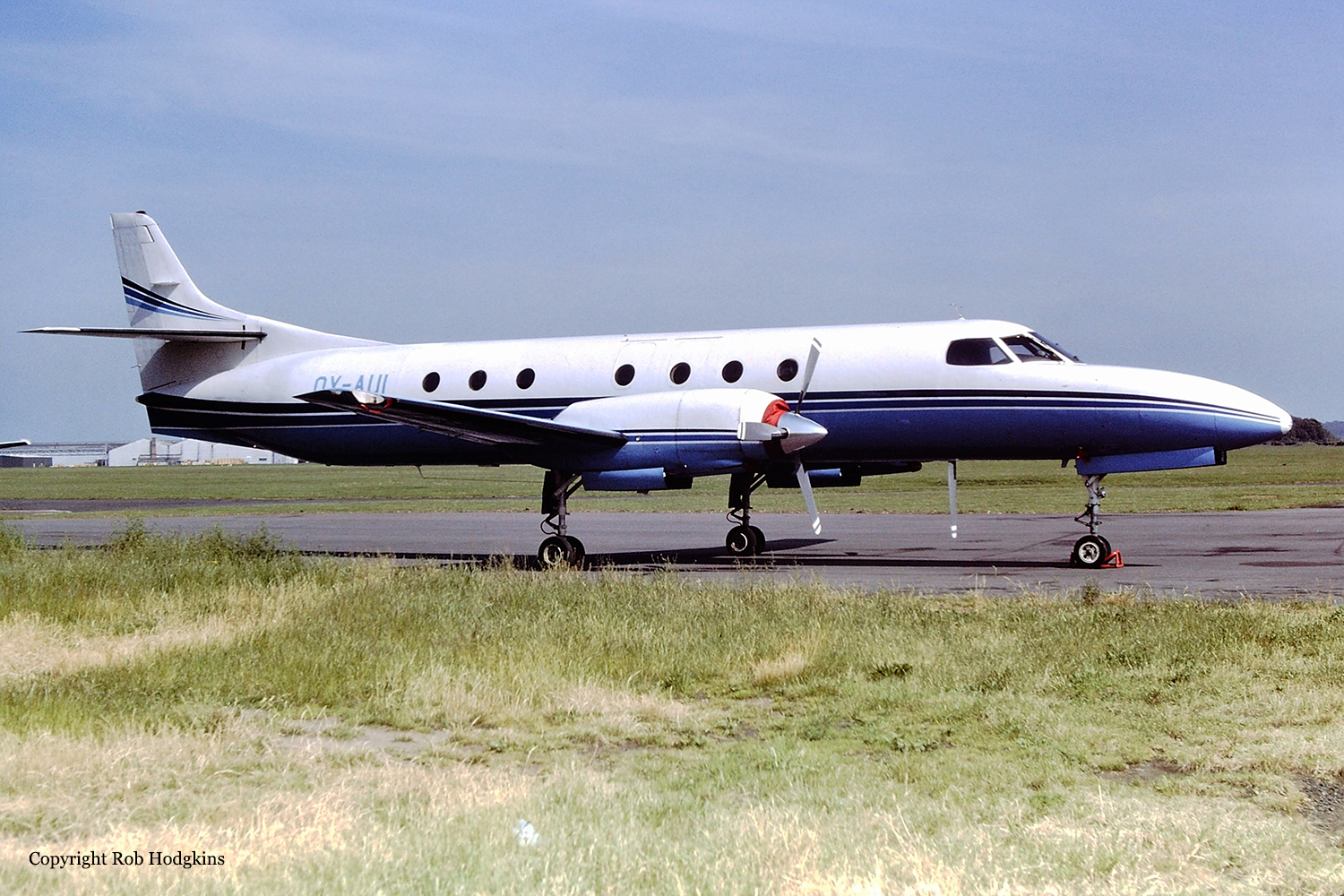Crash of a Cessna 421B Golden Eagle II off Stauning
Date & Time:
May 21, 1999 at 0002 LT
Registration:
OY-BIM
Survivors:
Yes
Schedule:
Stauning - Manchester
MSN:
421B-0878
YOM:
1974
Crew on board:
2
Crew fatalities:
Pax on board:
0
Pax fatalities:
Other fatalities:
Total fatalities:
0
Captain / Total hours on type:
361.00
Copilot / Total hours on type:
54
Aircraft flight hours:
5518
Circumstances:
The twin engine aircraft departed Stauning Airport at 0000LT on a cargo flight to Manchester with two pilots on board. Shortly after takeoff from runway 27, while in initial climb by night, the crew declared an emergency after the main cabin door opened. The captain reduced both engines power and the aircraft crash landed on the Klægbanke, less than 4 km from the airport. Both pilots were rescued an hour later (they were uninjured) and the aircraft was damaged beyond repair.
Probable cause:
The main cabin door opened during initial climb because the crew failed to ensure it was properly closed. Investigations reported that the door locking mechanism was not properly adjusted and that the crew did not identify the abnormal situation. The following factors were identified:
- The captain immediately reduced power on both engines when the door opened,
- The captain was not properly trained,
- The operator did not ensure that the crew was qualified and trained to perform this type of flight,
- The crew failed to follow the pre departure checklist,
- The crew's attention was focused on the door that opened at a critical moment of the flight and failed to continue the flight and monitor the various instruments.
- The captain immediately reduced power on both engines when the door opened,
- The captain was not properly trained,
- The operator did not ensure that the crew was qualified and trained to perform this type of flight,
- The crew failed to follow the pre departure checklist,
- The crew's attention was focused on the door that opened at a critical moment of the flight and failed to continue the flight and monitor the various instruments.
Final Report:




